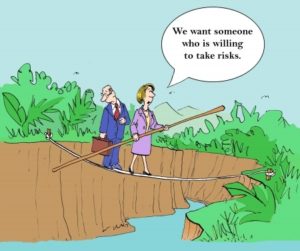What is Collaboration Burnout?


Silicon Valley’s corporate culture promotes teamwork. At its best, working with a team can lead to practical and innovative solutions. Teamwork doesn’t always make the dream work, though. In fact, many people struggle with a phenomenon called collaboration burnout. It’s a feeling that can range from tension to apathy and limits the overall effectiveness of both a team and its individual members. Before you fall victim to the effects of this overload, it’s a good idea to understand what causes it, and how you can prevent it from dominating your work life.
Two Roads to Burnout
Burnout always has an underlying cause. There are two main paths that lead to those feelings of excessive fatigue, negativity, and listlessness. The first is a sudden jump in your workload. Perhaps you just received a promotion and want to prove you’re fit for the new position, or your supervisor wants you to spearhead a brand-new initiative. Newfound responsibilities can quickly overwhelm you if there’s no plan in place to address them methodically.
The other path is more gradual. It begins when your tasks and decisions build up over time, turning you into the ‘go-to’ person for a large swath of responsibilities and information. Your workload hits a critical mass and your productivity takes a dip. The constant churn of email, meetings, and requests creates the feeling that nothing ever gets done.
Too Much of Everything
This isn’t to say that ambition is a bad thing. It’s ambition without a strategy that causes problems. The effects of this are what takes a toll on your psyche.
It comes in the form of too much communication, both incoming and outgoing. Your teammates loop you into every email thread and have you chime in on every decision. You keep up on these things to stay in-the-know, while they chip away at your focus on more important matters. This goes hand in hand with having too many responsibilities. One simply can’t do everything and trying to do so usually leads to a less-than-stellar performance.
What it all comes down to is a lack of understanding. You’re burned out because you are not sure where your strengths lie anymore, and you don’t know your teammates’ strengths, either.
Identify Your Strengths
The solution to your over-involvement isn’t a quick fix. Unfortunately, you’ve created a situation that won’t be easy to extract yourself from. It can be done, though, and it starts by focusing on your strengths. Find the things you excel at, as well as those you actively enjoy doing. This is your value add to current and future projects. From there, it’s easy to see where your weak spots are, which is just as important.
Take Your Schedule Seriously
The next step is time management. A set schedule that strikes a balance between teamwork and time spent alone creates space for you to problem-solve effectively. This schedule shows you just how much time you have in your day and outlines your responsibilities in a tangible way. It allows you to focus on the most important tasks on your to-do list. These are the things where your strengths truly shine through and provide a positive impact on your team. This, in turn, prevents you from spending too much time on items that won’t register as big victories for your team. What those ‘big victories’ look like is up to your discretion but prioritizing them is crucial to avoiding burnout.
The items where you don’t add as much value can be given away gradually. Identify people within your organization you believe would add more value than you and follow the organization’s protocol for transitioning a viable candidate onto those teams.
Harness the Power of Yes

With a better grasp on your strengths and the time at your disposal, you can appreciate the full power of saying ‘yes.’ You can’t take on a new responsibility unless it fits both your strengths and schedule. This isn’t selfish. It’s for the good of the team, and your organization. When you do jump onto a new project, get a clear understanding of the scope of your responsibilities. Do not take on anything you believe will upset the balance of your workload. Talk with your supervisors to find a compromise that will harness your strengths before saying ‘yes.’
The power of ‘yes’ belongs to your teammates, too. If they sign on for a project, respect that decision, and expect them to carry out their responsibilities dutifully. If you overstep your boundaries in this regard, working together will be more difficult, and make everyone more prone to burnout.
Protect Your Teammates
Speaking of your teammates, it’s key to keep an eye open for signs of burnout among them. A positive and healthy group will get more done. If you find your teammates are often battling illness, exercising poor judgment or just have a generally negative outlook on the work that needs to get done, burnout might be the culprit. Check-in with your teammates regularly to develop a sense of how they feel about their workload. Implore them to take steps to avoid burnout, if needed. Remember to lead by example and practice, don’t preach.
Keep An Eye on Screen Time
Lastly, a word about screen time. Much is made about the time we spend ‘plugged-in.’ Everyone has a different threshold for how much time they can spend connected, and it’s important to respect that, especially with your teammates. With that said, two concepts can help you make the most of your screen time. The first is to understand your purpose. What do you want to accomplish during your screen time? Set a goal and focus on achieving it. The second is to schedule breaks. Regular pauses from work can help you maintain focus and clarity for the tasks of the day and stave off the onset of burnout.
Assessment
If you believe you suffer from collaborative overload, you are not alone. Take this assessment to find out for sure.










Comments
Comments
Powered by WP LinkPress